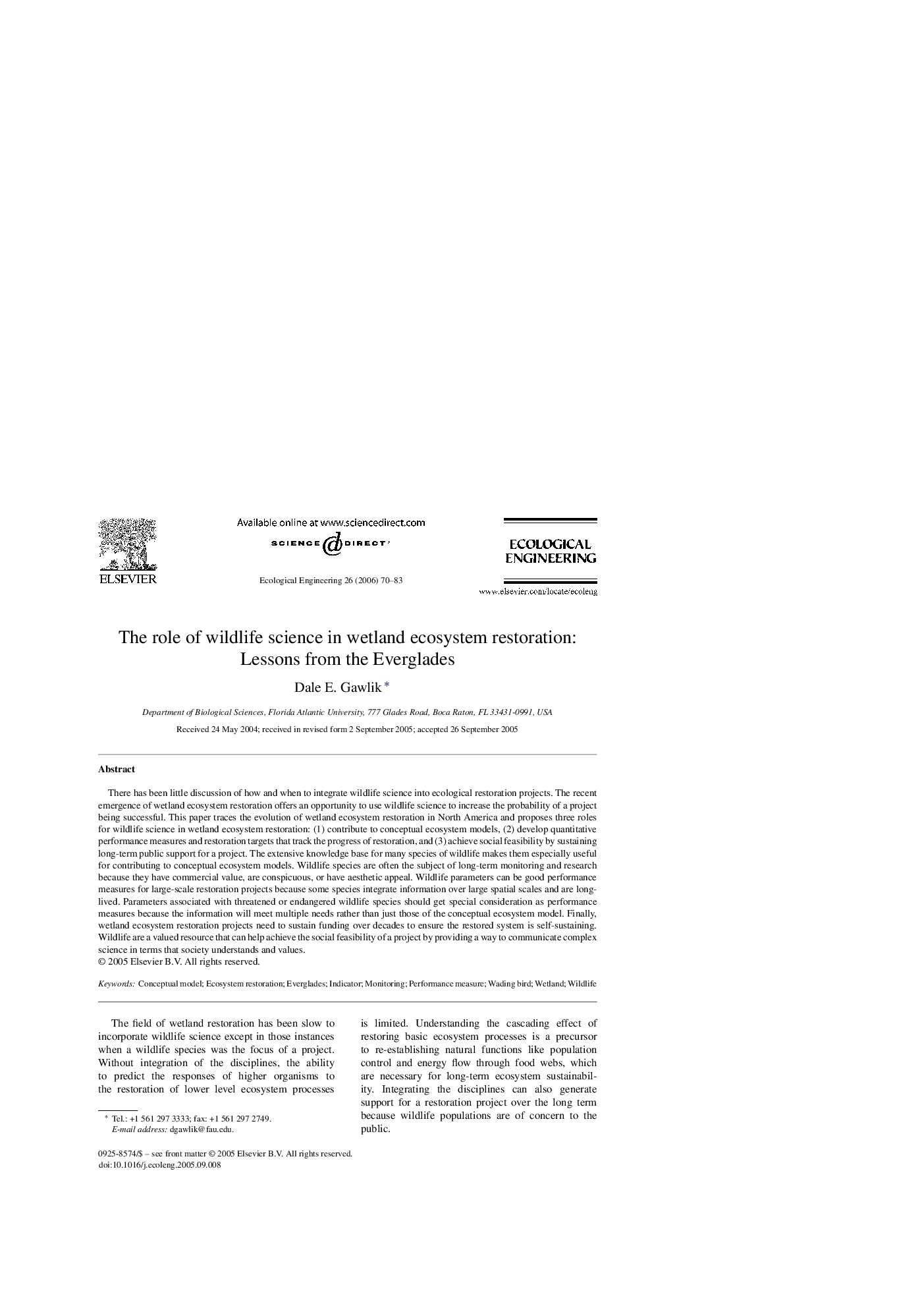| Article ID | Journal | Published Year | Pages | File Type |
|---|---|---|---|---|
| 4391310 | Ecological Engineering | 2006 | 14 Pages |
There has been little discussion of how and when to integrate wildlife science into ecological restoration projects. The recent emergence of wetland ecosystem restoration offers an opportunity to use wildlife science to increase the probability of a project being successful. This paper traces the evolution of wetland ecosystem restoration in North America and proposes three roles for wildlife science in wetland ecosystem restoration: (1) contribute to conceptual ecosystem models, (2) develop quantitative performance measures and restoration targets that track the progress of restoration, and (3) achieve social feasibility by sustaining long-term public support for a project. The extensive knowledge base for many species of wildlife makes them especially useful for contributing to conceptual ecosystem models. Wildlife species are often the subject of long-term monitoring and research because they have commercial value, are conspicuous, or have aesthetic appeal. Wildlife parameters can be good performance measures for large-scale restoration projects because some species integrate information over large spatial scales and are long-lived. Parameters associated with threatened or endangered wildlife species should get special consideration as performance measures because the information will meet multiple needs rather than just those of the conceptual ecosystem model. Finally, wetland ecosystem restoration projects need to sustain funding over decades to ensure the restored system is self-sustaining. Wildlife are a valued resource that can help achieve the social feasibility of a project by providing a way to communicate complex science in terms that society understands and values.
